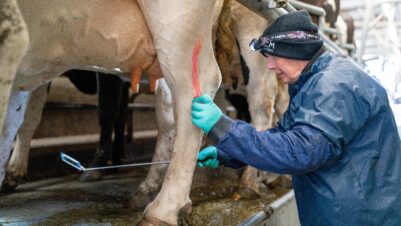There has never been a more crucial time for us to care about the environment. Rising temperatures, changes to wildlife populations and extreme weather events are being witnessed across the world. Climate change is not a myth, a hoax or a conspiracy. We must act now.
Waste disposal has a huge impact on the environment. In the UK, a great deal of waste is sent to landfills. Some of this waste will rot away and be reabsorbed into the earth. However, most is not biodegradable and never will. While this waste sits in landfill and begins the slow decomposition process, it will generate methane. According to Borunda (2019), the methane produced by American waste and landfills contributes to 14 percent of the country’s annual footprint.
This is why it is so important that we, as veterinary professionals, take responsibility for the waste we produce and where it ends up. The “waste hierarchy” ranks waste management according to what is best for the environment. It is essentially a guidance suggested for creating a sustainable life. It begins with prevention (most favourable) and ends with disposal (least favourable). This is where the three Rs come in: reduce, reuse, recycle.
Reduce
Reducing the amount of single-use plastics we use in practice may seem difficult when we are putting the needs of our patients first, but it is far from impossible. There are ways to get the best of both worlds. For example, a range of reusable options for medical waste disposal is available, eliminating the need for single-use sharps bins and pharmaceutical waste bins in your practice. It is estimated that “the overall ‘carbon footprint’ of a … reusable sharps container can be up to 76 percent less than that of disposable containers” (Sharpsmart, 2017).
Purchasing a water purifier instead of individual bottles of distilled water will also reduce the use of single-use plastics. Not only are these a cost-effective investment for your practice, but just imagine how many single-use plastic water bottles you will eliminate with this simple switch.
Although reducing your plastic usage in practice is critical, there are many other aspects of reducing to think about too. Other key areas to address include paper waste and waste generated from packaging. Reducing your paper waste is easy. By setting your printer’s default settings to double-sided printing, you will drastically reduce how much paper you are using with minimal effort. Emailing invoices, receipts, reminders and patient histories will further reduce your paper usage. It’s these small, simple changes that will add up in the long run. If you email 15 receipts a day instead of printing physical copies, your practice will save over 5,475 pieces of paper over the course of a year. For practices looking to go beyond this and become completely paperless, veterinary-specific cloud-based systems are available.
Reuse
Reusing is as simple as it sounds: reuse what you have instead of throwing it away! This may include simple things like changing to reusable surgical caps and having designated theatre shoes. But this can also include more complex ideas such as running a “deposit return scheme” for clients with repeat medications. And remember, reusing within the veterinary profession does not just have to be confined to your practice. Items which are not being used can be donated or sold. For example, excess blankets or expired prescription diets can be given to animal charities or out of date bandaging supplies can be donated to veterinary charities abroad. If you don’t want to give items away for free, try selling unused equipment or books to others within the profession.
Recycle
Recycling may sound idyllic but there is a good reason why it is at the bottom of the waste hierarchy and not the top. 91 percent of plastic does not get recycled (Parker, 2018). The concept of recycling is encouraging for materials such as metals and glass, where they can be recycled endlessly without altering the physical and chemical qualities of the material. The truth, however, is materials such as plastic and paper have a recycling limit. These materials are often “down-cycled” into something of a lesser quality. This is why it is so vital that we try to reduce and reuse first, but it doesn’t mean we should stop recycling altogether. Recycling has positives too, including conserving resources, saving energy and, of course, reducing the amount of waste sent to landfill.
Key areas to have recycling stations in your practice include your prep area (packaging) and reception/offices (paper). Your local council will be able to let you know exactly which materials they will accept for recycling but the basics will include paper, cardboard, metals, glass and certain types of plastics. Other materials to think about are batteries, bulbs, ink cartridges and electronics.






